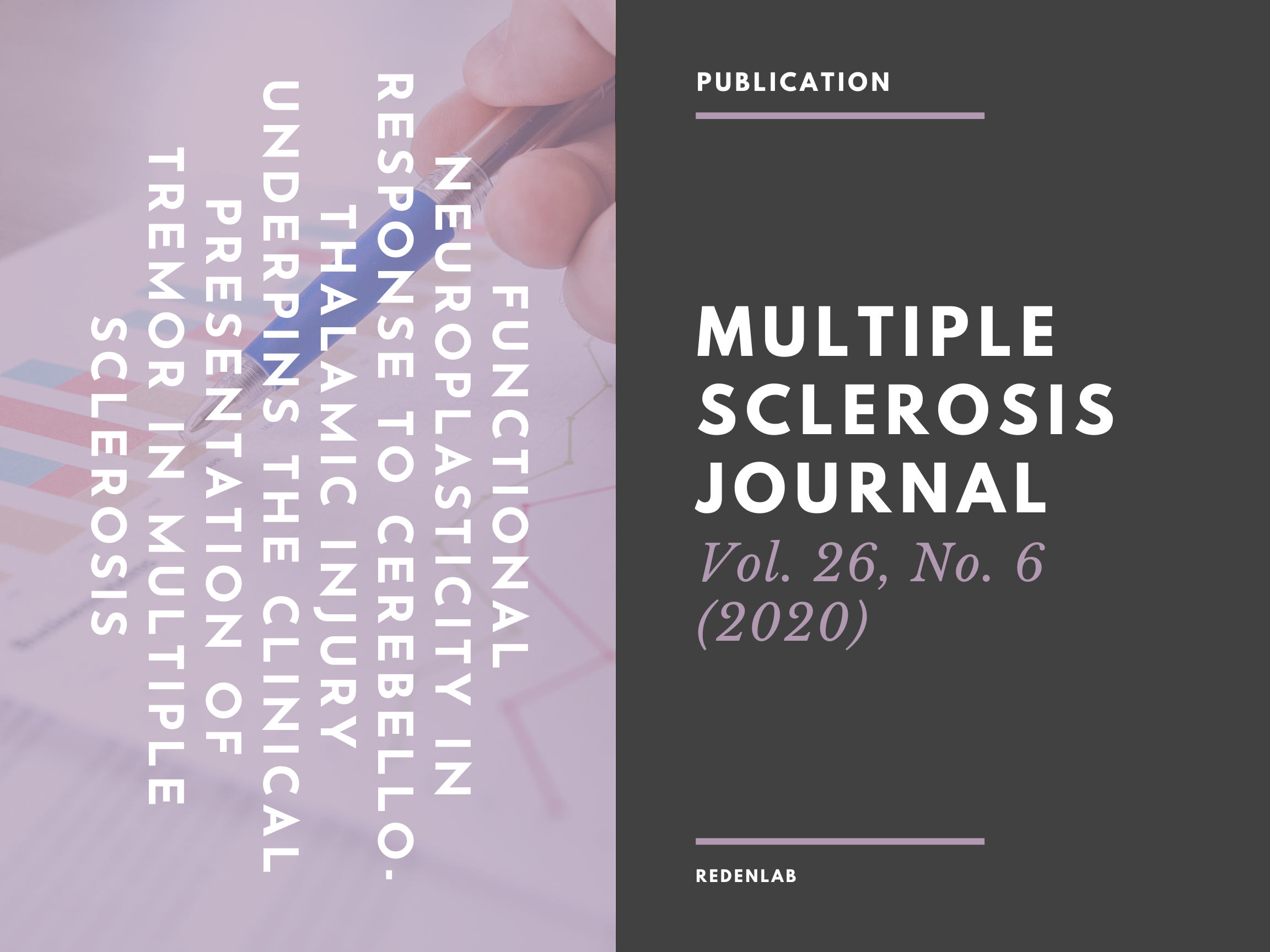Functional neuroplasticity in response to cerebello-thalamic injury underpins the clinical presentation of tremor in multiple sclerosis

Background:
Tremor is present in almost half of multiple sclerosis (MS) patients. The lack of understanding of its pathophysiology is hampering progress in development of treatments.
Objectives:
To clarify the structural and functional brain changes associated with the clinical phenotype of upper limb tremor in people with MS.
Methods:
Fifteen healthy controls (46.1 ± 15.4 years), 27 MS participants without tremor (46.7 ± 11.6 years) and 42 with tremor (46.6 ± 11.5 years) were included. Tremor was quantified using the Bain score (0–10) for overall severity, handwriting and Archimedes spiral drawing. Functional magnetic resonance imaging activations were compared between participants groups during performance of a joystick task designed to isolate tremulous movement. Inflammation and atrophy of cerebello-thalamo-cortical brain structures were quantified.
Results:
Tremor participants were found to have atrophy of the cerebellum and thalamus, and higher ipsilateral cerebellar lesion load compared to participants without tremor (p < 0.020). We found higher ipsilateral activation in the inferior parietal lobule, the premotor cortex and supplementary motor area in MS tremor participants compared to MS participants without tremor during the joystick task. Finally, stronger activation in those areas was associated with lower tremor severity.
Conclusion:
Subcortical neurodegeneration and inflammation along the cerebello-thalamo-cortical and cortical functional neuroplasticity contribute to the severity of tremor in MS.
Click here for more details.
